Robert Marshall Awards
The Robert Marshall Award is The Wilderness Society's highest award presented to a private citizen who has never held federal office but has devoted long-term service to and has had a notable influence upon conservation and the fostering of an American land ethic. The first award was presented to Sigurd F. Olson at a dinner in 1981. Other past recipients include Larry Rockefeller, Margaret Murie, Wallace Stegner, Peggy and Ed Wayburn, E.O. Wilson and Roxanne Quimby.
The award is named for Bob Marshall, a New York City native who discovered his love of wilderness during his childhood summers spent in the Adirondack Mountains. He later became a visionary leader of the wilderness protection movement, an influential advocate of conservation within the federal government and, in 1935, a co-founder of The Wilderness Society.
Past events
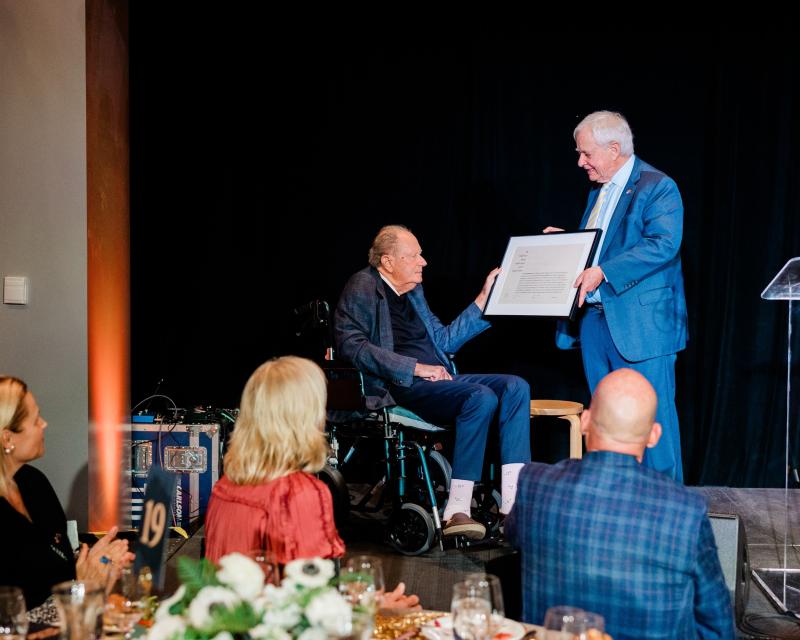
2023 Robert Marshall Award
On September 28, 2023, The Wilderness Society honored David Bonderman, Chairman and Founding Partner of TPG Capital, and Governing Council Board Member in Seattle, WA.
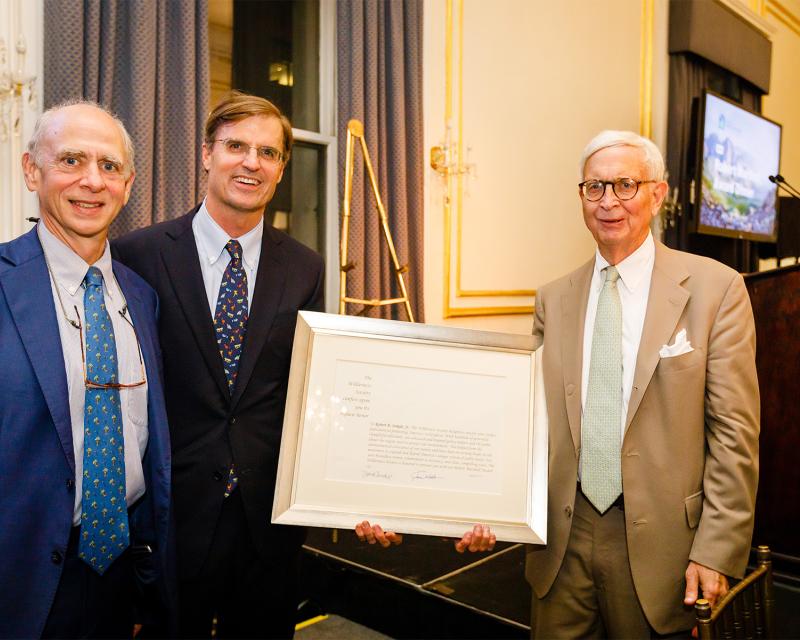
Brian Dorsey
2018 Robert Marshall Award
On September 27, 2018, The Wilderness Society honored Robert B. Semple, Jr. at the Metropolitan Club in New York, NY.
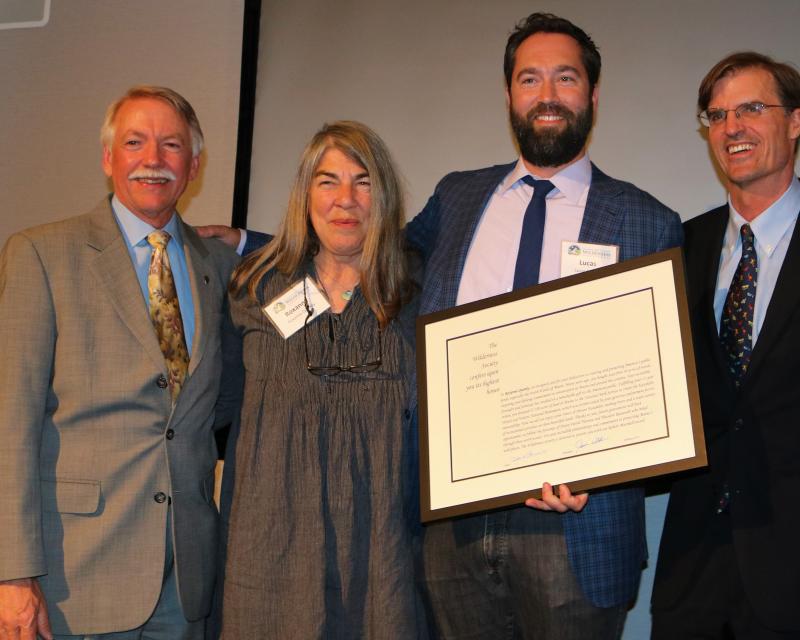
Melissa Pewett/TWS
2017 Robert Marshall Award
On February 23, 2017, The Wilderness Society honored Roxanne Quimby at Decatur House at Lafayette Square in Washington, DC.
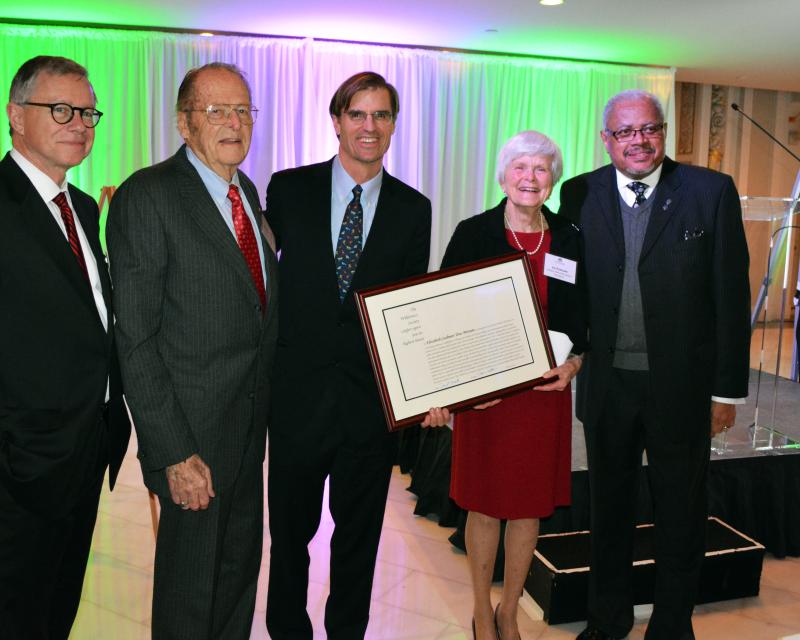
Melissa Pewett/TWS
2016 Robert Marshall Award (two honorees)
On February 24, 2017, The Wilderness Society honored Elizabeth Cushman Titus Putnam at the National Museum of Women in the Arts in Washington, DC.
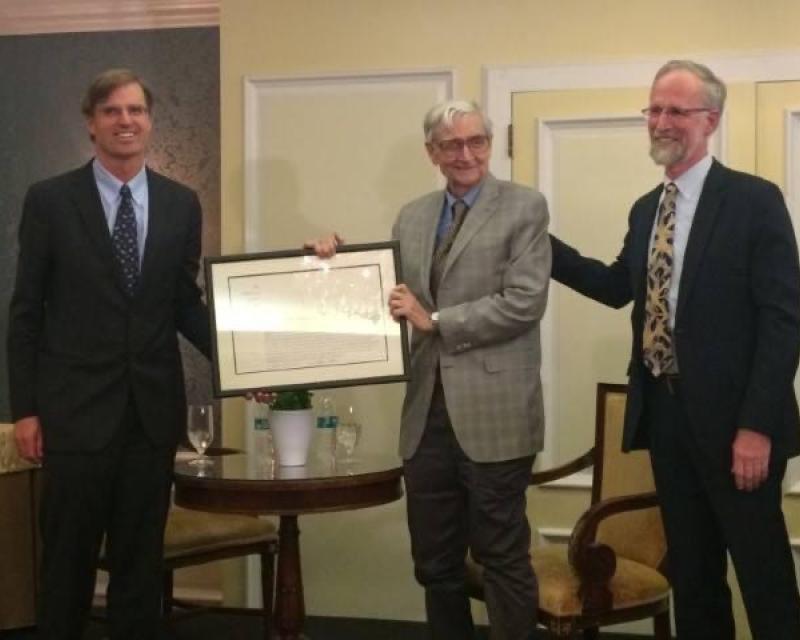
Melissa Pewett/TWS
2016 Robert Marshall Award (two honorees)
On September 15, 2016, The Wilderness Society honored Edward Osborne Wilson at the Taj in Boston, MA.
Past Robert Marshall Award recipients
Charles Wilkinson (2023)
Charles was a scholar, author, teacher, tribal advocate, and force in  natural resources law who worked closely with tribal nations on countless legal concerns, including the creation of Bears Ears National Monument. After graduating from Stanford Law School and practicing with Phoenix and San Francisco firms, Charles joined the Native American Rights Fund in 1971 as a staff attorney. Since 1975, he taught at the Oregon and Colorado law schools, receiving many teaching and research awards. Most recently Charles was the Moses Lasky Professor of Law Emeritus at the University of Colorado where he taught and mentored many, including TWS staff. A prolific writer, he produced influential and enduring scholarship – from the standard law casebooks on Indian Law and Federal Public Land Law to more general audience books like “Blood Struggle: The Rise of Modern Indian Nations” and “Crossing the Next Meridian: Land, Water and the Future of the West.” Charles also served on The Wilderness Society’s Governing Council for 8 years and on its Honorary Council for more than 20 years.
natural resources law who worked closely with tribal nations on countless legal concerns, including the creation of Bears Ears National Monument. After graduating from Stanford Law School and practicing with Phoenix and San Francisco firms, Charles joined the Native American Rights Fund in 1971 as a staff attorney. Since 1975, he taught at the Oregon and Colorado law schools, receiving many teaching and research awards. Most recently Charles was the Moses Lasky Professor of Law Emeritus at the University of Colorado where he taught and mentored many, including TWS staff. A prolific writer, he produced influential and enduring scholarship – from the standard law casebooks on Indian Law and Federal Public Land Law to more general audience books like “Blood Struggle: The Rise of Modern Indian Nations” and “Crossing the Next Meridian: Land, Water and the Future of the West.” Charles also served on The Wilderness Society’s Governing Council for 8 years and on its Honorary Council for more than 20 years.
Jamie Pinkham (2021)
A member of The Wilderness Society’s Governing Council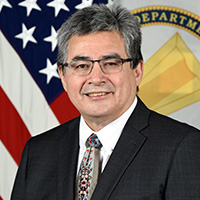 from 1996 to 2021 and a citizen of the Nez Perce Tribe, Mr. Pinkham has spent most of his career advocating for tribal sovereignty, self-determination, and treaty rights. He is the Principal Deputy Assistant Secretary of the Army for Civil Works, responsible for the nation's water and wetland resources, flood control, navigation, and aquatic ecosystem restoration. Prior to this role, he spent over two decades working in the Columbia River Basin on tribal treaty rights and native sovereignty.
from 1996 to 2021 and a citizen of the Nez Perce Tribe, Mr. Pinkham has spent most of his career advocating for tribal sovereignty, self-determination, and treaty rights. He is the Principal Deputy Assistant Secretary of the Army for Civil Works, responsible for the nation's water and wetland resources, flood control, navigation, and aquatic ecosystem restoration. Prior to this role, he spent over two decades working in the Columbia River Basin on tribal treaty rights and native sovereignty.
Rose Letwin (2020)
Ms. Letwin is the founder, president, and sole funder of the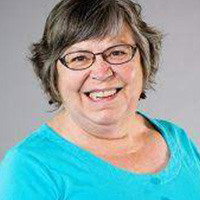 Wilburforce Foundation, which supports land, water, and wildlife conservation efforts in Western North America. Since 1991, the Foundation has invested over $217 million in science-based conservation solutions and is seen as an international leader in collaborative conservation. Its first grant to The Wilderness Society in 1999 helped create the Wilderness Support Center, a program designed to train and engage grassroots activists.
Wilburforce Foundation, which supports land, water, and wildlife conservation efforts in Western North America. Since 1991, the Foundation has invested over $217 million in science-based conservation solutions and is seen as an international leader in collaborative conservation. Its first grant to The Wilderness Society in 1999 helped create the Wilderness Support Center, a program designed to train and engage grassroots activists.
Robert B. Semple, Jr. (2018)
A reporter and an editor for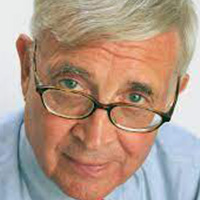 The New York Times from 1963 to 2018, Mr. Semple has been described as the unsung hero of the modern environmental movement. Ten of his editorials on the environment, which appeared without his byline, won the Pulitzer Prize of 1996. He raised the profile of the environmental movement from marginal to mainstream and helped shape U.S. environment and environmental policy.
The New York Times from 1963 to 2018, Mr. Semple has been described as the unsung hero of the modern environmental movement. Ten of his editorials on the environment, which appeared without his byline, won the Pulitzer Prize of 1996. He raised the profile of the environmental movement from marginal to mainstream and helped shape U.S. environment and environmental policy.
Roxanne Quimby (2017)
After co-founding and then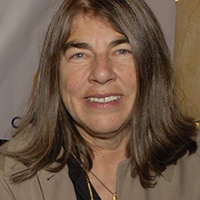 selling Burt’s Bees, a personal care company, Ms. Quimby focused her energy and resources on protecting the forests of Maine. This culminated with her gift of 87,000 acres to the U.S. Department of the Interior, along with $20 million to fund its operations. In 2016, the Katahdin Woods and Waters National Monument was thus established.
selling Burt’s Bees, a personal care company, Ms. Quimby focused her energy and resources on protecting the forests of Maine. This culminated with her gift of 87,000 acres to the U.S. Department of the Interior, along with $20 million to fund its operations. In 2016, the Katahdin Woods and Waters National Monument was thus established.
E. O. Wilson (2016)
A biologist who conducted pioneering work 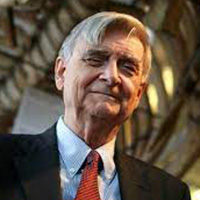 on biodiversity, insects, and human nature, Mr. Wilson has been called the “father of biodiversity” and “Darwin’s heir.” He was a member of the Harvard faculty from 1956 until 1996, was the author of two Pulitzer Prize-winning books, and won over 100 awards in his lifetime. In the later half of his career, Mr. Wilson became a champion of the world’s wild places and endangered wildlife, calling to set aside 50% of Earth’s surface to combat the extinction crisis. The idea became the basis for his 2016 book Half-Earth.
on biodiversity, insects, and human nature, Mr. Wilson has been called the “father of biodiversity” and “Darwin’s heir.” He was a member of the Harvard faculty from 1956 until 1996, was the author of two Pulitzer Prize-winning books, and won over 100 awards in his lifetime. In the later half of his career, Mr. Wilson became a champion of the world’s wild places and endangered wildlife, calling to set aside 50% of Earth’s surface to combat the extinction crisis. The idea became the basis for his 2016 book Half-Earth.
Elizabeth Cushman Titus Putnam (2016)
Ms. Putnam founded the Student Conservation Association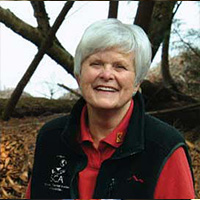 in 1957, following up on an idea she proposed in her senior thesis at Vassar College. Modeled after the 1930s federal Civilian Conservation Corps, the SCA enlisted student volunteers to help with the upkeep of U.S. national parks and public green spaces. Serving as the organization’s president until her retirement in 1990, Ms. Putnam earned many awards for her work, including the Conservation Service Award from the Department of the Interior in 1974. Through the SCA, more than 100,000 young people have given countless hours of hands-on conservation service restoring and preserving millions of acres of wild lands.
in 1957, following up on an idea she proposed in her senior thesis at Vassar College. Modeled after the 1930s federal Civilian Conservation Corps, the SCA enlisted student volunteers to help with the upkeep of U.S. national parks and public green spaces. Serving as the organization’s president until her retirement in 1990, Ms. Putnam earned many awards for her work, including the Conservation Service Award from the Department of the Interior in 1974. Through the SCA, more than 100,000 young people have given countless hours of hands-on conservation service restoring and preserving millions of acres of wild lands.
Sarah James (2015)
A Gwich’in tribal elder and leader, Dr. James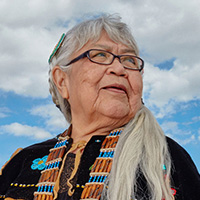 has spent most of her life fighting to protect her ancestral homeland, which includes the coastal plain of the Arctic National Wildlife Refuge, from oil exploration and drilling. She was recognized for her fierce defense of the Arctic Refuge as a co-winner of the 2002 Goldman Environmental Prize. Dr. James has served as a board member of the International Indian Treaty Council, as a member of the Arctic Village Traditional Council, and recently, as a member of The Wilderness Society’s IMAGO Initiative Task Force.
has spent most of her life fighting to protect her ancestral homeland, which includes the coastal plain of the Arctic National Wildlife Refuge, from oil exploration and drilling. She was recognized for her fierce defense of the Arctic Refuge as a co-winner of the 2002 Goldman Environmental Prize. Dr. James has served as a board member of the International Indian Treaty Council, as a member of the Arctic Village Traditional Council, and recently, as a member of The Wilderness Society’s IMAGO Initiative Task Force.
William Cronon (2014)
A member of The Wilderness Society’s Governing Council 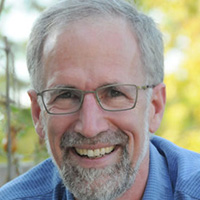 since 1995, Mr. Cronon is an environmental historian at the University of Wisconsin-Madison. A Rhodes Scholar and MacArthur Fellow, he was featured in the 2009 Ken Burns documentary The National Parks: America's Best Idea. In his research and writing, Mr. Cronon has traced the idea of wilderness throughout American history, seeking to understand how humans have interacted with the natural world. He received a lifetime achievement award from the American Society for Environmental History, among others.
since 1995, Mr. Cronon is an environmental historian at the University of Wisconsin-Madison. A Rhodes Scholar and MacArthur Fellow, he was featured in the 2009 Ken Burns documentary The National Parks: America's Best Idea. In his research and writing, Mr. Cronon has traced the idea of wilderness throughout American history, seeking to understand how humans have interacted with the natural world. He received a lifetime achievement award from the American Society for Environmental History, among others.
Dennis & Ann Pence & Aspenwood Foundation (2013)
In 1984, the Pences launched Coldwater Creek, a national women’s clothing retailer. After reaching financial success with the company, they created the Aspenwood Foundation, a major environmental supporter from 1996 to 2014. Aspenwood’s specific investments in science and advocacy at The Wilderness Society and other organizations helped protect millions of acres of iconic wildlands in Montana, Idaho, Wyoming, and Alaska.
David Getches (posthumously) (2012)
Co-founder and executive director of the 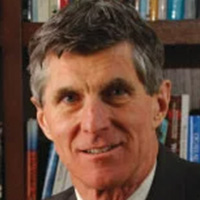 Native American Rights Fund from 1970 to 1976, Mr. Getches was a Wilderness Society Governing Council member from 2000 until his death in 2011. Mr. Getches joined the faculty at the University of Colorado Law School in Boulder in 1979, serving as Dean and a professor of natural resources law. In two leaves of absence, he served as the executive director of the Colorado Department of Natural Resources from 1983 to 1987, and then as a special consultant to the U.S. Secretary of the Interior in 1996. He was posthumously and unanimously awarded the National Congress of American Indians Lifetime Achievement Award in 2011.
Native American Rights Fund from 1970 to 1976, Mr. Getches was a Wilderness Society Governing Council member from 2000 until his death in 2011. Mr. Getches joined the faculty at the University of Colorado Law School in Boulder in 1979, serving as Dean and a professor of natural resources law. In two leaves of absence, he served as the executive director of the Colorado Department of Natural Resources from 1983 to 1987, and then as a special consultant to the U.S. Secretary of the Interior in 1996. He was posthumously and unanimously awarded the National Congress of American Indians Lifetime Achievement Award in 2011.
Hansjörg Wyss (2011)
Mr. Wyss is one of the world’s top environmental 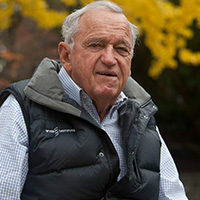 supporters, and he has been a member of The Wilderness Society’s Governing Council since 1993. In 2013, he signed the Giving Pledge and pledged to give $1 billion to environmental causes in 2018. Mr. Wyss was the founder of Synthes Holding AG, a medical device manufacturer, which he sold to Johnson & Johnson in 2012. He is the founder of the Wyss Foundation and the Berger Action Fund and is a founding board member of the Conservation Lands Foundation and the Center for American Progress.
supporters, and he has been a member of The Wilderness Society’s Governing Council since 1993. In 2013, he signed the Giving Pledge and pledged to give $1 billion to environmental causes in 2018. Mr. Wyss was the founder of Synthes Holding AG, a medical device manufacturer, which he sold to Johnson & Johnson in 2012. He is the founder of the Wyss Foundation and the Berger Action Fund and is a founding board member of the Conservation Lands Foundation and the Center for American Progress.
Billy Frank Jr. (2010)
Mr. Frank was a Native American 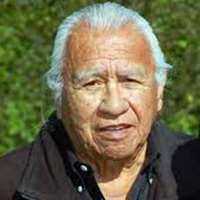 environmental leader and treaty rights activist. A member of the Nisqually Tribe in Washington state, he led a grassroots campaign for fishing rights on the tribe’s Nisqually River in the 1960s and 1970s. He chaired the Northwest Indian Fisheries Commission for over 30 years, from 1981 to 2014. In 2015, Mr. Frank was posthumously awarded the Presidential Medal of Freedom, and the Nisqually National Wildlife Refuge was named in his honor.
environmental leader and treaty rights activist. A member of the Nisqually Tribe in Washington state, he led a grassroots campaign for fishing rights on the tribe’s Nisqually River in the 1960s and 1970s. He chaired the Northwest Indian Fisheries Commission for over 30 years, from 1981 to 2014. In 2015, Mr. Frank was posthumously awarded the Presidential Medal of Freedom, and the Nisqually National Wildlife Refuge was named in his honor.
Bethine Church (2009)
A member of The Wilderness Society’s Governing Council 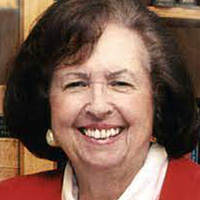 from 1993 to 2013, Ms. Church was nicknamed Idaho’s third senator, as she was as politically active as her husband, U.S. Senator Frank Church. Both were known for championing the wild places of Idaho, their native state. Ms. Church founded and served as president of The Sawtooth Society, established to protect the Sawtooth National Recreation Area. She also founded and chaired The Frank Church Institute at Boise State University, where she received an honorary doctorate degree in 2009.
from 1993 to 2013, Ms. Church was nicknamed Idaho’s third senator, as she was as politically active as her husband, U.S. Senator Frank Church. Both were known for championing the wild places of Idaho, their native state. Ms. Church founded and served as president of The Sawtooth Society, established to protect the Sawtooth National Recreation Area. She also founded and chaired The Frank Church Institute at Boise State University, where she received an honorary doctorate degree in 2009.
Clifton Merritt (2008)
A Montana native, Mr. Merritt helped found the Montana Wilderness Association in 1957 and served in various positions for the Montana Wildlife Federation from 1950 to 1964. From 1964 to 1978, he served as national field director for The Wilderness Society, helping to pass the Wilderness Act. A strong believer in building the support for wilderness among local citizens, he established the organization’s Western Regional Office in Denver. Through his efforts, millions of acres were added to the National Wilderness Preservation System, including the Scapegoat, Absaroka-Beartooth, River of No Return, Lee Metcalf, Eagles Nest, and many other wildlands.
Terry Tempest Williams (2006)
Ms. Williams served on The Wilderness Society’s 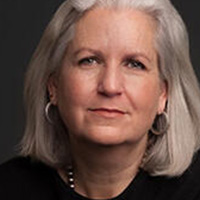 Governing Council from 1990 to 1994. A naturalist and environmental activist, she is best known as the author of 16 books, including the environmental literature classic, Refuge: An Unnatural History of Family and Place, as well as The Hour of Land: A Personal Topography of America’s National Parks. Her writing has also appeared in The New Yorker, The New York Times, Orion Magazine, and numerous anthologies as a crucial voice for ecological consciousness and social change. Since 2017, she has been the Writer-in-Residence at the Harvard Divinity School.
Governing Council from 1990 to 1994. A naturalist and environmental activist, she is best known as the author of 16 books, including the environmental literature classic, Refuge: An Unnatural History of Family and Place, as well as The Hour of Land: A Personal Topography of America’s National Parks. Her writing has also appeared in The New Yorker, The New York Times, Orion Magazine, and numerous anthologies as a crucial voice for ecological consciousness and social change. Since 2017, she has been the Writer-in-Residence at the Harvard Divinity School.
John Adams (2005)
Mr. Adams co-founded the Natural Resources 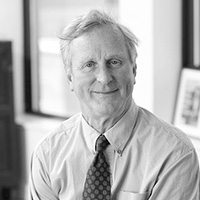 Defense Council in 1970 and served as the organization’s first executive director and, later, as its president until 2006. At NRDC, he helped pass the Clean Water Act of 1972, phase out the use of lead in gasoline, and curb the emissions from coal-burning power plants. Mr. Adams received the Presidential Medal of Freedom in 2010. Currently, he is the chair of the Open Space Institute and serves on the boards of the Nicolas School of the Environment and Duke University School of Law.
Defense Council in 1970 and served as the organization’s first executive director and, later, as its president until 2006. At NRDC, he helped pass the Clean Water Act of 1972, phase out the use of lead in gasoline, and curb the emissions from coal-burning power plants. Mr. Adams received the Presidential Medal of Freedom in 2010. Currently, he is the chair of the Open Space Institute and serves on the boards of the Nicolas School of the Environment and Duke University School of Law.
Brant Calkin (2004)
As the executive director of the Southern Utah Wilderness Association from 1987 to 1995, Mr. Calkin took a grassroots organization and made Utah wilderness a national issue. Among his successes was the establishment of the Grand Staircase-Escalante National Monument in 1996. Mr. Calkin was also president of the Sierra Club 1976 to 1977 and received its John Muir Award in 1984.
Peggy & Ed Wayburn (2001)
The Wayburns were instrumental in establishing 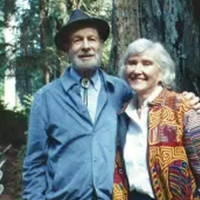 Redwoods National Park and the Golden Gate National Recreation Area, and in securing passage of the Alaska National Interest Lands Conservation Act of 1980. A prolific nature writer and photographer, Ms. Wayburn’s book Alaska, the Great Land was key to the 1970s debate in Congress over federal land in Alaska. Dr. Wayburn served as president of the Sierra Club in the 1960s, where he led and won campaigns to protect millions of acres. President Clinton awarded him the Presidential Medal of Freedom in 1999, citing the couple’s extensive work in Alaska.
Redwoods National Park and the Golden Gate National Recreation Area, and in securing passage of the Alaska National Interest Lands Conservation Act of 1980. A prolific nature writer and photographer, Ms. Wayburn’s book Alaska, the Great Land was key to the 1970s debate in Congress over federal land in Alaska. Dr. Wayburn served as president of the Sierra Club in the 1960s, where he led and won campaigns to protect millions of acres. President Clinton awarded him the Presidential Medal of Freedom in 1999, citing the couple’s extensive work in Alaska.
Edward A. Ames (2001)
Mr. Ames served on The Wilderness Society’s Governing Council from 1980 to 2016. He is a past chairman of the Hudson River Foundation and a former program officer of the Office of Resources and Environment at the Ford Foundation. Mr. Ames also served on the boards of the Open Space Institute, Wave Hill, and the Mary Flagler Cary Charitable Trust.
Stewart Brandborg (2000)
A wildlife biologist by training, Mr. Brandborg served as 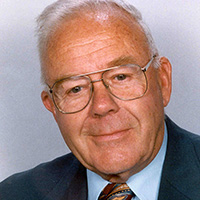 The Wilderness Society’s executive director from 1964 to 1976. Prior to that, he was the organization’s assistant executive director from 1960 to 1964. During his tenure, Congress approved more than 70 new wilderness areas in 31 states. Mr. Brandborg was an early advocate for working with local groups and stressed the importance of grassroots volunteers. He served as an ex-officio member of The Wilderness Society’s Governing Council from 1956 to 1977.
The Wilderness Society’s executive director from 1964 to 1976. Prior to that, he was the organization’s assistant executive director from 1960 to 1964. During his tenure, Congress approved more than 70 new wilderness areas in 31 states. Mr. Brandborg was an early advocate for working with local groups and stressed the importance of grassroots volunteers. He served as an ex-officio member of The Wilderness Society’s Governing Council from 1956 to 1977.
Clarence Petty (1999)
An avid conservationist and outdoorsman who worked 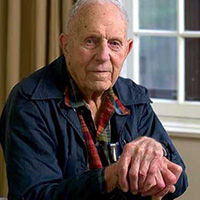 for the Civilian Conservation Corps during the Depression, Mr. Petty was the Supervising Forest Ranger in the Adirondack Forest Preserve. He later served as liaison between the New York State Conservation Department and the State Legislature. He was widely known for his calm and passionate advocacy of Adirondack Park, the vast oasis of wild lands and rivers in upstate New York. In 1975, Mr. Petty helped found the Adirondack Council and was its first director.
for the Civilian Conservation Corps during the Depression, Mr. Petty was the Supervising Forest Ranger in the Adirondack Forest Preserve. He later served as liaison between the New York State Conservation Department and the State Legislature. He was widely known for his calm and passionate advocacy of Adirondack Park, the vast oasis of wild lands and rivers in upstate New York. In 1975, Mr. Petty helped found the Adirondack Council and was its first director.
Celia M. Hunter (1998)
Ms. Hunter helped establish the Alaska Conservation 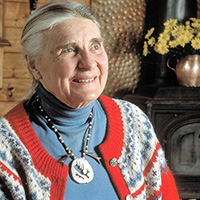 Foundation in 1980 and served on its board for 18 years. She aided in creating and passing the Alaska National Interest Lands Conservation Act of 1980, which protected 100 million acres of federal lands, doubled the size of the national park and wildlife refuge system, and tripled the acreage designated as wilderness. Ms. Hunter served on The Wilderness Society’s Governing Council from 1968 to 1977, when she stepped down to take over as The Wilderness Society’s executive director, becoming the first woman to lead a national conservation organization.
Foundation in 1980 and served on its board for 18 years. She aided in creating and passing the Alaska National Interest Lands Conservation Act of 1980, which protected 100 million acres of federal lands, doubled the size of the national park and wildlife refuge system, and tripled the acreage designated as wilderness. Ms. Hunter served on The Wilderness Society’s Governing Council from 1968 to 1977, when she stepped down to take over as The Wilderness Society’s executive director, becoming the first woman to lead a national conservation organization.
Thomas A. Barron (1997)
Mr. Barron has served on The Wilderness Society 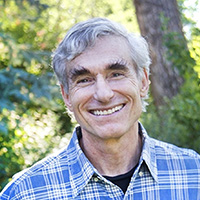 Governing Council since 1984. He also established the Gloria Barron Wilderness Society Scholarship, which has supported the graduate education of 29 “wilderness scholars” since 1998. He is the author of fiction for children and young adults, many of which feature nature and ecology in mythical settings, and nature books. At Princeton University, Mr. Barron created the Barron Family Biodiversity Research Fund, the Barron Family Fund for Innovations in Environmental Studies, and the Thoreau Freshman Seminar in Environmental Writing. He also created the Gloria Barron Prize for Young Heroes, which honors leaders ages 8 to 18 who have made a significant impact on the environment.
Governing Council since 1984. He also established the Gloria Barron Wilderness Society Scholarship, which has supported the graduate education of 29 “wilderness scholars” since 1998. He is the author of fiction for children and young adults, many of which feature nature and ecology in mythical settings, and nature books. At Princeton University, Mr. Barron created the Barron Family Biodiversity Research Fund, the Barron Family Fund for Innovations in Environmental Studies, and the Thoreau Freshman Seminar in Environmental Writing. He also created the Gloria Barron Prize for Young Heroes, which honors leaders ages 8 to 18 who have made a significant impact on the environment.
Edmund A. Stanley Jr. (1996)
An avid Chesapeake Bay sailor, 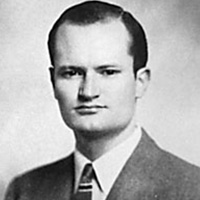 Mr. Stanley was one of the earliest supporters, and the most generous supporter ever, of the Chesapeake Bay Foundation. In 1981 after his retirement from the printing industry, he founded the Town Creek Foundation, which funded projects to advance a sustainable environment—largely concerning Chesapeake Bay watershed—until its sunset in 2019. Mr. Stanley served on The Wilderness Society’s Governing Council from 1980 to 1989.
Mr. Stanley was one of the earliest supporters, and the most generous supporter ever, of the Chesapeake Bay Foundation. In 1981 after his retirement from the printing industry, he founded the Town Creek Foundation, which funded projects to advance a sustainable environment—largely concerning Chesapeake Bay watershed—until its sunset in 2019. Mr. Stanley served on The Wilderness Society’s Governing Council from 1980 to 1989.
Nina Leopold Bradley & Charles Crane Bradley (1995)
Ms. Bradley was a wildlife researcher 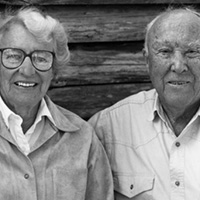 and a daughter of conservationist and Wilderness Society co-founder Aldo Leopold. Mr. Bradley was a geology professor at Montana State. Both studied the impact of climate change on native ecosystems. They built the Bradley Study Center on the Leopold Reserve in 1976, and their work was instrumental in establishing The Aldo Leopold Foundation in 1982.
and a daughter of conservationist and Wilderness Society co-founder Aldo Leopold. Mr. Bradley was a geology professor at Montana State. Both studied the impact of climate change on native ecosystems. They built the Bradley Study Center on the Leopold Reserve in 1976, and their work was instrumental in establishing The Aldo Leopold Foundation in 1982.
David Brower (1994)
The first executive director of the 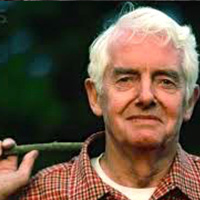 Sierra Club (1952 – 1969), Mr. Brower also founded Friends of the Earth in 1969. Spinning off its staff, he helped launch the League of Conservation Voters in 1970. He fought to stop dams in Dinosaur National Monument and Grand Canyon National Park, led campaigns for 10 new national parks and seashores, and was instrumental in gaining passage of the Wilderness Act of 1964.
Sierra Club (1952 – 1969), Mr. Brower also founded Friends of the Earth in 1969. Spinning off its staff, he helped launch the League of Conservation Voters in 1970. He fought to stop dams in Dinosaur National Monument and Grand Canyon National Park, led campaigns for 10 new national parks and seashores, and was instrumental in gaining passage of the Wilderness Act of 1964.
Arnold Bolle (1993)
Mr. Bolle was Dean of the School of Forestry 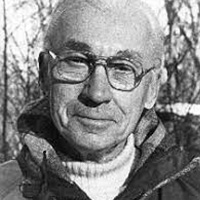 at the University of Montana. He was instrumental in bringing forest conservation into public view at a national scale with his report, A University View of the Forest Service in 1970, requested by U.S. Senator Lee Metcalf. It sparked a battle that led to major changes to national forest policy and to the passage of the National Forest Management Act of 1976. Mr. Bolle served on The Wilderness Society’s Governing Council from 1978 to 1994.
at the University of Montana. He was instrumental in bringing forest conservation into public view at a national scale with his report, A University View of the Forest Service in 1970, requested by U.S. Senator Lee Metcalf. It sparked a battle that led to major changes to national forest policy and to the passage of the National Forest Management Act of 1976. Mr. Bolle served on The Wilderness Society’s Governing Council from 1978 to 1994.
Frances Beinecke (1990)
Ms. Beinecke served on The Wilderness Society’s 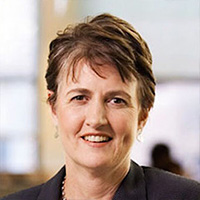 Governing Council from 1977 to 1990. She was executive director of the Natural Resources Defense Council for eight years prior to serving as its president from 2006 to 2015, and she currently serves on the board of its Action Fund. In 2010, she was appointed by President Obama to the National Commission on the BP Deepwater Horizon Oil Spill and Offshore Drilling. Ms. Beinecke also serves on the board of the World Resources Institute, the Energy Future Coalition, and the Nicholas Institute for Environmental Policy Solutions, among others. In 2007, she received The National Audubon Society’s Rachel Carson Award.
Governing Council from 1977 to 1990. She was executive director of the Natural Resources Defense Council for eight years prior to serving as its president from 2006 to 2015, and she currently serves on the board of its Action Fund. In 2010, she was appointed by President Obama to the National Commission on the BP Deepwater Horizon Oil Spill and Offshore Drilling. Ms. Beinecke also serves on the board of the World Resources Institute, the Energy Future Coalition, and the Nicholas Institute for Environmental Policy Solutions, among others. In 2007, she received The National Audubon Society’s Rachel Carson Award.
Wallace Stegner (1989)
A Pulitzer Prize winning novelist, Mr. Stegner taught 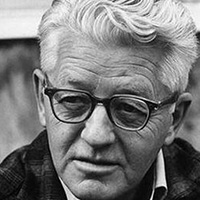 creative writing at the University of Wisconsin, Harvard, and Stanford. He served on the Sierra Club's board of directors from 1964 to 1966. Mr. Stegner wrote the foreword to and edited This Is Dinosaur, which the Sierra Club used in the campaign to prevent dams in Dinosaur National Monument. He also wrote what is known as “The Wilderness Letter,” an influential submission to the Outdoor Recreation Resources Review Commission that is credited with helping pass the Wilderness Act of 1964. Mr. Stegner served on The Wilderness Society’s Governing Council from 1984 to 1993.
creative writing at the University of Wisconsin, Harvard, and Stanford. He served on the Sierra Club's board of directors from 1964 to 1966. Mr. Stegner wrote the foreword to and edited This Is Dinosaur, which the Sierra Club used in the campaign to prevent dams in Dinosaur National Monument. He also wrote what is known as “The Wilderness Letter,” an influential submission to the Outdoor Recreation Resources Review Commission that is credited with helping pass the Wilderness Act of 1964. Mr. Stegner served on The Wilderness Society’s Governing Council from 1984 to 1993.
T. H. Watkins (1988)
Mr. Watkins was a historian of the American West, a 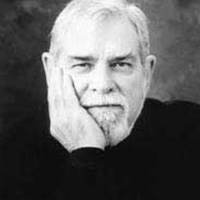 magazine editor, and a prolific writer on environmental issues. Mr. Watkins held editorial roles with such magazines as The American West and American Heritage. In 1982, he joined The Wilderness Society as the editor of Wilderness magazine, where he was a protégé of novelist and conservationist Wallace Stegner. From 1997 until his death in 2000, Watkins taught at Montana State University as a professor of Western American Studies.
magazine editor, and a prolific writer on environmental issues. Mr. Watkins held editorial roles with such magazines as The American West and American Heritage. In 1982, he joined The Wilderness Society as the editor of Wilderness magazine, where he was a protégé of novelist and conservationist Wallace Stegner. From 1997 until his death in 2000, Watkins taught at Montana State University as a professor of Western American Studies.
Margaret Murie (1986)
With her husband, Olaus Murie, Ms. Murie researched 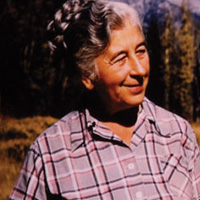 the Alaskan wilderness and its wildlife. She began her campaign to protect what is now the Arctic National Wildlife Refuge in 1956. She returned to Alaska to survey wilderness for the National Park Service and contributed to the Alaska National Interest Lands Conservation Act of 1980. Olaus Murie served on The Wilderness Society’s Governing Council from 1937 until his death in 1963; he also served as president of The Wilderness Society from the Murie Ranch in Jackson Hole where they lived. Equally committed to the organization, Ms. Murie served on the Governing Council from 1976 to 1990. She received the Audubon Medal in 1980, the John Muir Award in 1983, and the Presidential Medal of Freedom in 1998.
the Alaskan wilderness and its wildlife. She began her campaign to protect what is now the Arctic National Wildlife Refuge in 1956. She returned to Alaska to survey wilderness for the National Park Service and contributed to the Alaska National Interest Lands Conservation Act of 1980. Olaus Murie served on The Wilderness Society’s Governing Council from 1937 until his death in 1963; he also served as president of The Wilderness Society from the Murie Ranch in Jackson Hole where they lived. Equally committed to the organization, Ms. Murie served on the Governing Council from 1976 to 1990. She received the Audubon Medal in 1980, the John Muir Award in 1983, and the Presidential Medal of Freedom in 1998.
Theodore R. Swem (1985)
Mr. Swem chaired the Alaska Planning Group, which worked to identify and protect important natural lands in Alaska. This culminated in the designation of 100 million acres as national parks and wildlife refuges. Mr. Swem served in the National Park Service from 1957 to 1976. He also worked with foreign governments to establish their park systems and was instrumental in establishing Colorado's State Park System in the 1950s. Mr. Swem served on The Wilderness Society’s Governing Council from 1962 to 1986.
Russell W. Peterson (1984)
Mr. Peterson was a research scientist at DuPont before 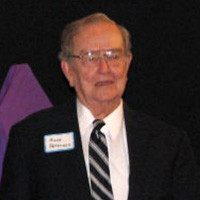 becoming a champion of environmentalism. As governor of Delaware, he led the effort to adopt the Coastal Zone Act of 1971, protecting 115 miles of the state’s coastline from heavy industrialization. As chairman of the President’s Council on Environmental Quality, Mr. Peterson was instrumental in shaping the Environmental Impact Statement process. He was president of the National Audubon Society from 1979 to 1985. Mr. Peterson received the League of Conservation Voters’ Lifetime Achievement Award in 1995 and the National Wildlife Federation Conservationist of the Year Award in 1994.
becoming a champion of environmentalism. As governor of Delaware, he led the effort to adopt the Coastal Zone Act of 1971, protecting 115 miles of the state’s coastline from heavy industrialization. As chairman of the President’s Council on Environmental Quality, Mr. Peterson was instrumental in shaping the Environmental Impact Statement process. He was president of the National Audubon Society from 1979 to 1985. Mr. Peterson received the League of Conservation Voters’ Lifetime Achievement Award in 1995 and the National Wildlife Federation Conservationist of the Year Award in 1994.
Laurance Rockefeller Jr. (1983)
Mr. Rockefeller organized Americans for Alaska in 1977, 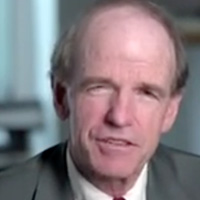 which lobbied for the Alaska National Interest Lands Conservation Act of 1980. A trustee of the Natural Resources Defense Council since 2016, Mr. Rockefeller served as its lawyer for 27 years. He is the current president of the American Conservation Association, and he is the co-founder and former Vice-Chair of the New York League of Conservation Voters.
which lobbied for the Alaska National Interest Lands Conservation Act of 1980. A trustee of the Natural Resources Defense Council since 2016, Mr. Rockefeller served as its lawyer for 27 years. He is the current president of the American Conservation Association, and he is the co-founder and former Vice-Chair of the New York League of Conservation Voters.
George Marshall (1982)
George Marshall was an economist, political activist, and conservationist. He graduated from Columbia University and later earned a PhD in economics from the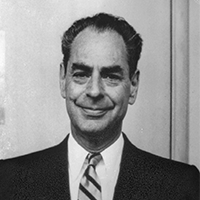 Brookings Institution. From 1934-37, Marshall worked as an economist for the consumer division of the National Recovery Administration under Franklin D. Roosevelt's New Deal. Along with his brother, TWS co-founder Bob Marshall, George climbed all 46 Adirondack High Peaks and forged a lifelong passion for the outdoors. After Bob’s death, George dedicated more than 50 years of service to The Wilderness Society and later to Sierra Club, where he served on the board of directors and as president from 1966-1967.
Brookings Institution. From 1934-37, Marshall worked as an economist for the consumer division of the National Recovery Administration under Franklin D. Roosevelt's New Deal. Along with his brother, TWS co-founder Bob Marshall, George climbed all 46 Adirondack High Peaks and forged a lifelong passion for the outdoors. After Bob’s death, George dedicated more than 50 years of service to The Wilderness Society and later to Sierra Club, where he served on the board of directors and as president from 1966-1967.
Sigurd F. Olson (1981)
While serving as president and vice president of The Wilderness Society, 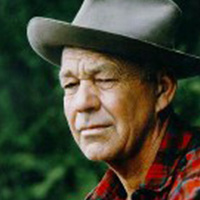 Mr. Olson helped draft the Wilderness Act of 1964 and establish Voyageurs National Park, Alaska's Arctic National Wildlife Refuge, and Point Reyes National Seashore. He also served as a consultant to Secretary of the Interior Stewart Udall on wilderness and national park issues. During most summers, Mr. Olson worked as a canoe guide and wrote about the natural history, ecology, and outdoor life in and around the Boundary Waters Canoe Area Wilderness.
Mr. Olson helped draft the Wilderness Act of 1964 and establish Voyageurs National Park, Alaska's Arctic National Wildlife Refuge, and Point Reyes National Seashore. He also served as a consultant to Secretary of the Interior Stewart Udall on wilderness and national park issues. During most summers, Mr. Olson worked as a canoe guide and wrote about the natural history, ecology, and outdoor life in and around the Boundary Waters Canoe Area Wilderness.
